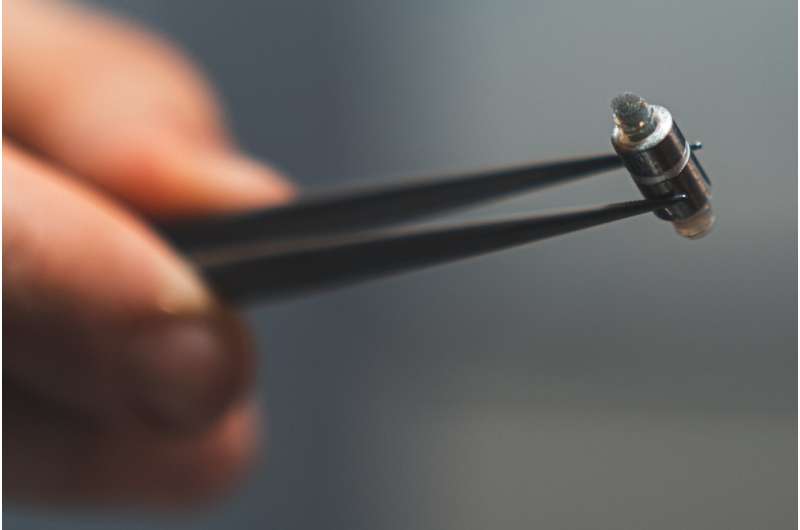New brain reading technology could help the development of brainwave-controlled devices

A new method to accurately record brain activity at scale has been developed by researchers at the Crick, Stanford University and UCL. The technique could lead to new medical devices to help amputees, people with paralysis or people with neurological conditions such as motor neurone disease.
The research in mice, published in Science Advances, developed an accurate and scalable method to record brain activity across large areas, including on the surface and in deeper regions simultaneously.
Using the latest in electronics and engineering techniques, the new device combines silicon chip technology with super-slim microwires, up to 15-times thinner than a human hair. The wires are so thin they can be placed deep in the brain without causing significant damage. Alongside its ability to accurately monitor brain activity, the device could also be used to inject electrical signals into precise areas of the brain.
"This technology provides the basis for lots of exciting future developments beyond neuroscience research. It could lead to tech that can pass a signal from the brain to a machine, for example helping those with amputations to control a prosthetic limb to shake a hand or stand up. It could also be used to create electrical signals in the brain when neurons are damaged and aren't firing themselves, such as in motor neurone disease," says Andreas Schaefer, group leader in the neurophysiology of behaviour laboratory at the Crick and professor of neuroscience at UCL.
When the device is connected to a brain, electrical signals from active neurons travel up the nearby microwires to a silicon chip, where the data is processed and analysed showing which areas of the brain are active.
The researchers ensured the design of the device allows it to be easily scaled depending on the size of the animal, with a few hundred wires for a mouse to over 100,000 for larger mammals. This is a key feature of the device as it means it holds potential, in the future, to be scaled for use with humans.
Mihaly Kollo, co-lead author, postdoc at the Crick's neurophysiology of behaviour laboratory and senior research associate at UCL, says: "One of the great challenges in recording brain activity, especially in deeper regions, is how to get the wires, called electrodes, in position without causing a lot of tissue damage or bleeding. Our method overcomes this by using electrodes that are sufficiently thin.
"Another challenge is recording the activity of many neurons that are that are distributed in layers with complex shapes in the three-dimensional space. Again, our method provides a solution as the wires can be readily arranged into any 3-D shape."
The technology described in the study is also the basis for a fully integrated brain computer interface system that is being developed by Paradromics, a company founded by Matthew Angle, one of the authors of this paper. The Texas-based company is working to develop a medical device platform that will improve the lives of people with critical diseases, including paralysis, sensory impairment and drug resistant neuropsychiatric diseases.
More information: "Massively parallel microwire arrays integrated with CMOS chips for neural recording" Science Advances (2020). advances.sciencemag.org/content/6/12/eaay2789



















